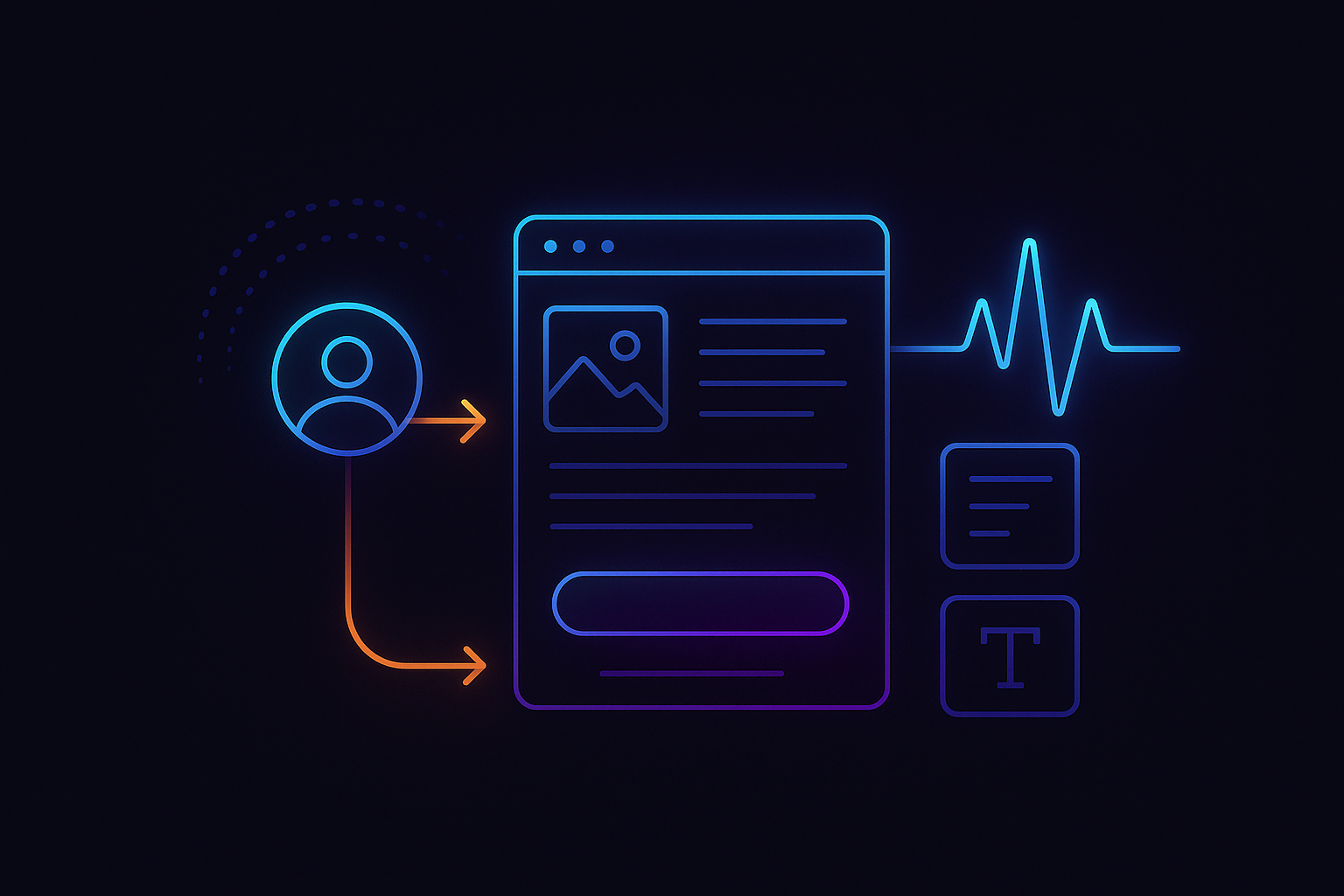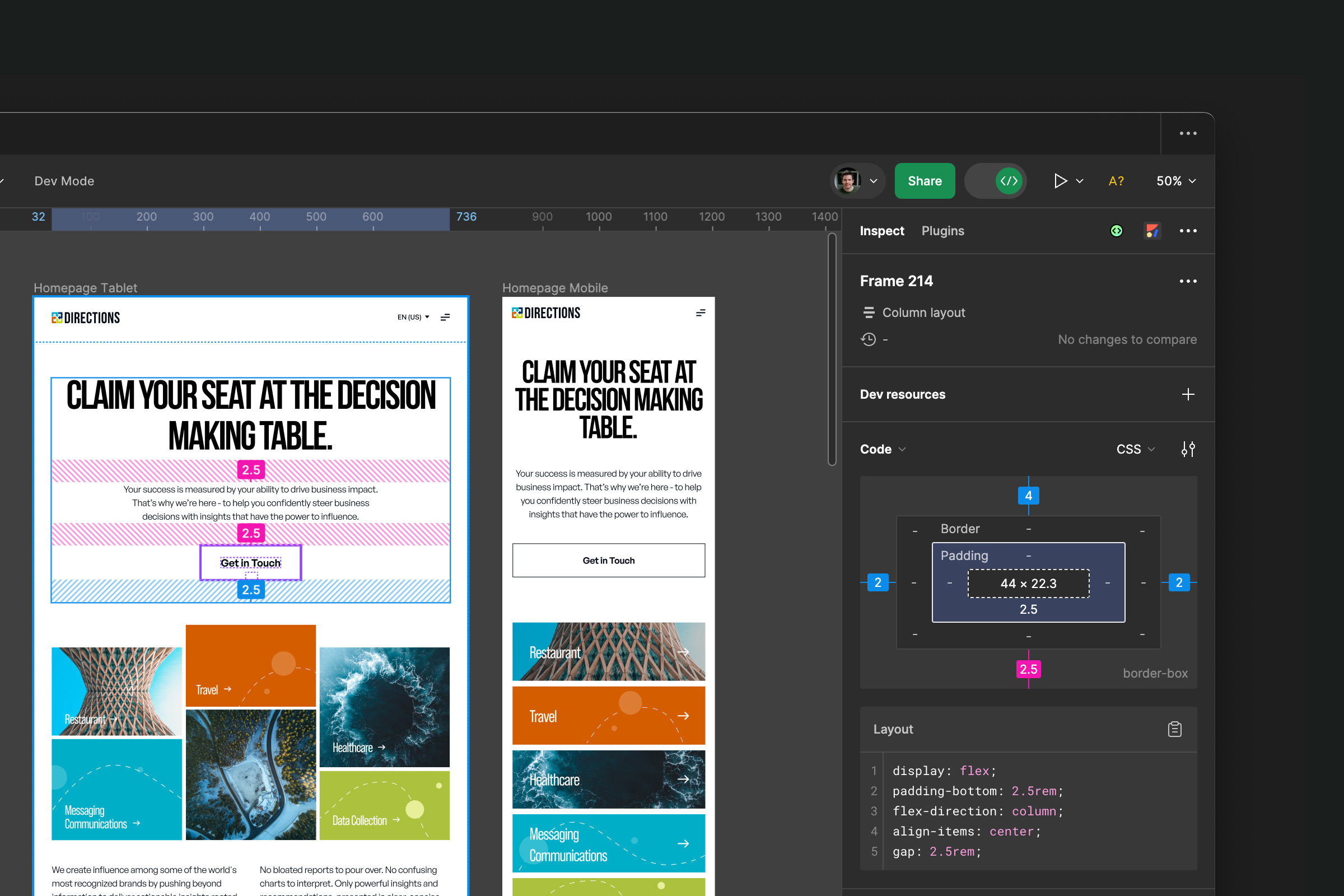Insights
Mastering content marketing: communicate to influence and drive conversions

Unpacking "Communicate to Influence"
Ben and Kelly Decker's "Communicate to Influence" was written nearly ten years ago to help people improve their communication to get ahead in the workplace. Today, it is still recognized as a gold standard for business communication, whether you're pitching to a potential client or delivering a keynote address.
In an age where so much communication happens online and in the privacy of a home or office, the principles of this book still apply. When it comes to content that influences decision making, there are a few strategies to take from this classic book to help convert browsers into customers.
Let’s dive in.
The essence of effective communication
"Communicate to Influence" navigates through the labyrinth of effective communication, offering insights into voice modulation, message structuring, and the art of avoiding common pitfalls. It emphasizes the power of authenticity, preparation, self-awareness, and the courage to break free from the status quo. By mastering these elements, you can elevate your presentations from mundane information dumps to inspiring calls to action. The online pitch isn’t all that different.
Authenticity
Authenticity in web writing means being genuine and honest in your communication. It's about showcasing the true personality of your brand and building trust with your audience. When your content is authentic, readers can feel the sincerity, making them more likely to trust and engage with your brand.

How it increases conversions: Authentic content resonates more with readers, builds trust, and establishes a connection. When users trust a brand, they are more likely to convert, whether that means making a purchase, subscribing to a newsletter, or engaging with your content.
Example:
- Ecommerce site: Instead of using generic product descriptions, provide detailed, honest reviews from real customers. Share behind-the-scenes stories about your brand's journey or the creation process of your products. For example, a clothing brand might include a story about how a particular garment was designed, emphasizing the craftsmanship and care put into each piece.
- Service-based business: Highlight genuine client testimonials and case studies. Share stories of how your service has positively impacted clients. For instance, a digital marketing agency could feature a case study detailing how they helped a small business increase their online presence and sales, complete with specific metrics and client quotes.
Preparation
Preparation in web writing means thoroughly planning and strategizing your content before publishing it. This includes researching your audience, understanding their needs, and creating content that addresses those needs effectively. Well-prepared content demonstrates that you understand your audience's pain points and are ready to provide solutions.
How it increases conversions: Well-prepared content is more relevant and valuable to your audience, which can lead to higher engagement and conversion rates. It demonstrates that you understand your audience's pain points and are ready to provide solutions.
Example:
- Blog posts: Conduct keyword research to understand what your audience is searching for. Prepare an editorial calendar to ensure consistent posting. Create detailed outlines for your blog posts to ensure they cover all necessary points and provide value. For example, a health and wellness blog might create a series of posts on a trending topic like intermittent fasting, providing comprehensive guides, meal plans, and expert interviews.
- Landing pages: Before designing a landing page, research your target audience's preferences and pain points. Craft a compelling value proposition and prepare persuasive copy that addresses those points. Use A/B testing to prepare different versions of the page and determine which one performs better.
Self-awareness
Self-awareness in web writing means understanding your brand's voice and how it is perceived by your audience. It's about being conscious of your strengths and weaknesses and adjusting your content accordingly. When you are self-aware, you can create content that aligns with your brand's identity and resonates with your audience.
How it increases conversions: When you are self-aware, you can create content that aligns with your brand's identity and resonates with your audience. This consistency helps in building a strong brand presence, which can lead to increased trust and higher conversion rates. A lack of self awareness, on the other hand, can make you a target for trolls - just ask Mark.

Example:
- Social media posts: Analyze your past posts to see which ones received the most engagement. Understand the tone and style that your audience prefers and replicate it in future posts. For instance, if your audience responds well to humorous, light-hearted content, continue to create posts in that style.
- Website copy: Regularly gather feedback from your audience to understand how they perceive your brand. Use this feedback to refine your website copy. For example, if your audience finds your current tone too formal, consider making it more conversational and approachable.
Courage to break free from the status quo
Breaking free from the status quo means daring to be different and innovative in your content strategy. It involves taking risks and experimenting with new ideas and formats.
How it increases conversions: Unique and creative content stands out. It captures attention and encourages users to engage with your brand. Innovative approaches can also provide fresh solutions to your audience's problems, driving them to convert.
Example:
- Interactive content: Instead of traditional blog posts, experiment with interactive content like quizzes, polls, or calculators. For example, a financial advisory site could create an interactive retirement calculator that provides personalized savings plans based on user input.
- Video content: Embrace video marketing by creating engaging videos that showcase your products or services. For instance, a beauty brand could create tutorial videos demonstrating how to use their products effectively, complete with customer testimonials and influencer endorsements.
The SHARP technique
A standout feature in the book is the SHARP technique — Stories, Humor, Analogies, References, and Pictures. This method is designed to create a deep connection with your audience, transforming your communication from forgettable to unforgettable.
SHARPs: enhancing engagement and conversion
Stories
Stories are powerful tools for connecting with your audience on an emotional level. They can make your content more relatable and memorable, transforming dry information into compelling narratives. Stories can be told through written word, case studies, or through imagery and video.
In "Communicate to Influence," the authors highlight the impact of storytelling with an example from a Guinness advertisement. The story features six friends playing basketball, five of whom are in wheelchairs. After the game, the five players rise from their wheelchairs to help their disabled friend across the street to a pub. This narrative not only underscores the theme of friendship but also leaves a lasting impression on the audience.

Practical uses:
- Ecommerce site: Share customer success stories or product origin stories. For instance, if you sell handmade jewelry, tell the story of how a particular piece was inspired by a personal experience or a cultural tradition.
- Service-based business: Use client case studies to demonstrate the effectiveness of your services. For example, a digital marketing agency could share a detailed story about how they helped a struggling small business increase its online visibility and sales through targeted SEO strategies.
Humor
Humor, when used appropriately, can make your content more engaging and memorable. It helps to humanize your brand and create a more relaxed and enjoyable experience for your audience.

Arguably one of Snickers most memorable ad campaigns was their “You’re not you when you’re hungry” campaign, which included this online banner ad, above. Over the years, the brand leveraged an array of humorous ads that were shareable, memorable and noteworthy.
Practical uses:
- Social media posts: Use light-hearted, humorous posts to engage your audience and encourage shares. For example, a coffee shop might post a funny meme about the struggles of Monday mornings.
- Blog posts: Inject humor into your writing to keep readers entertained. For instance, a tech blog could humorously describe common IT problems, like “the dreaded blue screen of death,” and then provide solutions.
Analogies
Analogies can simplify complex concepts by relating them to something more familiar. They help your audience understand and remember your message more easily.
The book uses the Great Baltimore Fire of 1904 as an analogy to explain the importance of standardization. The tragedy was exacerbated by incompatible firefighter hoses and city fire hydrants which led to confusion and catastrophe, underscoring the need for uniform standards.
Practical uses:
- Technical blog: Use analogies to explain complex concepts. For example, an IT security firm might explain data encryption by comparing it to sending a locked box through the mail, where only the recipient has the key.
- Product descriptions: Make your product features more relatable. For example, a mattress company might compare the comfort of their product to "sleeping on a cloud" to convey its softness and support.
References
References and quotes can add credibility to your content. They show that you’ve done your research and are backed by authoritative sources.
The book references a survey by Time magazine, which revealed that 84 percent of individuals check their phones daily, with 20 percent checking every ten minutes. This statistic highlights the pervasive influence of mobile devices on attention spans.
Practical uses:
- White papers and case studies: Use statistics and quotes from industry leaders to support your arguments. For instance, a digital marketing report might reference studies showing how mobile optimization can increase website traffic by 50%.
- Landing pages: Include testimonials and endorsements from satisfied customers or industry experts. For example, a fitness app might feature quotes from personal trainers praising its effectiveness.
Pictures
Visuals such as pictures, infographics, and videos can enhance your content, making it more engaging and easier to understand. They can break up text and provide visual interest, keeping readers on your page longer.
The New York City Department of Health and Mental Hygiene's subway campaign against sugary sodas used a powerful image of a soda bottle pouring into a glass, with the soda transforming into human fat. This vivid visual made the health risks of sugary drinks immediately clear and memorable.

Practical uses:
- Ecommerce Site: Use high-quality images of your products from different angles and in use. For example, a furniture store might show a sofa in various room settings to help customers visualize it in their own homes.
- Blog Posts: Incorporate infographics to summarize key points and data. For instance, a financial blog could use an infographic to illustrate the steps to creating a budget, making the information more digestible.
Bringing SHARPs together
Combining these elements can create a rich, engaging experience that drives conversions. For example, a landing page for a new fitness product could start with a compelling story (S) about a user's transformation journey, include humorous (H) anecdotes about common fitness struggles, use analogies (A) to explain product benefits, reference (R) expert endorsements, and feature high-quality pictures (P) and videos of the product in action.
An introduction to the Decker Grid
The Decker Grid is a strategic framework designed to help organize and structure your content, ensuring your message is clear, focused, and impactful. This tool consists of a 20-box grid arranged into four columns and five rows, each box representing a different aspect of your presentation or content.

The top and bottom rows are dedicated to your introduction and conclusion, while the middle rows house your key points and supporting details. By using the Decker Grid, you can systematically outline your content, starting with a compelling hook, clearly stating your point of view, and outlining actionable steps and benefits.
This structure not only helps in maintaining coherence but also ensures that your content flows logically and persuasively.
Applying "Communicate to Influence" to modern web writing
Now, let's take the principles from "Communicate to Influence" and apply them to the realm of content marketing, specifically focusing on increasing conversions through effective web writing.
The role of authenticity in content marketing
In an era where consumers are bombarded with information, authenticity stands out. Whether you're crafting copy for an ecommerce site or a service-based business, genuine, relatable content is crucial. Audiences are savvy and can spot insincerity from a mile away. By being authentic, you build trust, a key component in driving conversions.
Example: ecommerce sites
For ecommerce sites, authenticity can be showcased through detailed product descriptions, user-generated content, and honest customer reviews. Instead of overly polished, corporate-sounding descriptions, aim for a conversational tone that resonates with your audience. Highlight real-life usage scenarios and share stories from actual customers.
Engaging through stories and humor
Storytelling is a powerful tool in web writing. It not only captures attention but also creates an emotional connection. Humor, when used appropriately, can make your content more engaging and memorable.
Example: service-based websites
For service-based websites, incorporate stories that highlight client success or use cases that demonstrate your expertise. A bit of humor can also humanize your brand and make your content more relatable. For instance, a digital marketing agency might share a humorous anecdote about a common client challenge, followed by a success story.
Structuring your message for maximum impact
The Deckers emphasize the importance of structuring your message. On the web, where attention spans are short, this is even more critical. Use clear headings (H1, H2, H3), bullet points, and concise paragraphs to make your content easy to scan.
Example: blog posts
When writing blog posts, start with a compelling introduction that hooks the reader. Use subheadings to break up the content and guide the reader through your points. Incorporate SHARPs—stories, humor, analogies, references, and pictures—to keep the reader engaged.
The power of visual communication
Visuals are an integral part of effective web writing. They break up text, illustrate points, and enhance understanding. Use relevant images, infographics, and videos to complement your content.
Example: landing pages
On landing pages, visuals can be particularly powerful. Use high-quality images that support your message. Infographics can simplify complex information, making it easier for visitors to understand and take action. Videos can provide dynamic, engaging content that holds attention longer.
Leveraging the Decker Grid for web content
The Decker Grid is a tool that helps structure your content logically. It ensures that your message is clear, focused, and impactful.
Example: email campaigns
For email campaigns, use the Decker Grid to outline your key points. Start with a strong hook (SHARP), state your Point of View (POV), provide actionable steps, and highlight the benefits. Conclude with another SHARP to leave a lasting impression.
Fostering a growth mindset in content creation
Adopting a growth mindset in your content creation process means constantly seeking ways to improve and adapt. It involves being open to feedback, learning from your mistakes, and continuously refining your approach.
Example: continuous improvement
Regularly review your content performance. Use analytics to understand what works and what doesn't. Be willing to experiment with different formats, tones, and strategies. A/B testing can be particularly useful in identifying the most effective approaches.
Crafting a compelling call to action
A well-crafted call to action (CTA) is crucial for driving conversions. It should be clear, concise, and compelling, giving the audience a reason to take the desired action immediately.
Example: conversion rate optimization
On your website, CTAs should be prominently placed and action-oriented. Use strong verbs and create a sense of urgency. For example, "Get Your Free Quote Today" or "Join Now and Save 20%". Ensure that the CTA stands out visually to draw the user's attention.
Conclusion
"Communicate to Influence" offers timeless insights that are highly applicable to modern web writing. By embracing authenticity, engaging through stories and humor, structuring your content effectively, leveraging visuals, and fostering a growth mindset, you can create content that not only engages your audience but also drives conversions. Remember, the ultimate goal is to influence your audience to take action, whether it's making a purchase, signing up for a service, or simply engaging with your brand.
By applying these principles, you can transform your web content from mundane to magical, ensuring that your message resonates and inspires your audience to act.
So, go ahead, craft that compelling content, and watch your conversions soar!



































.jpeg)




.jpg)

.jpg)



.jpg)
